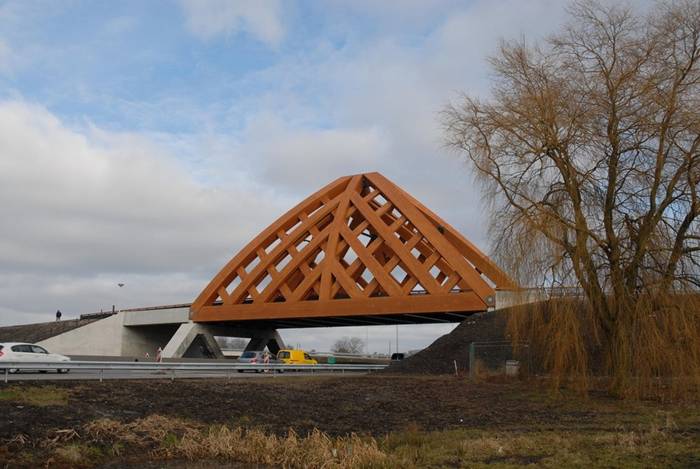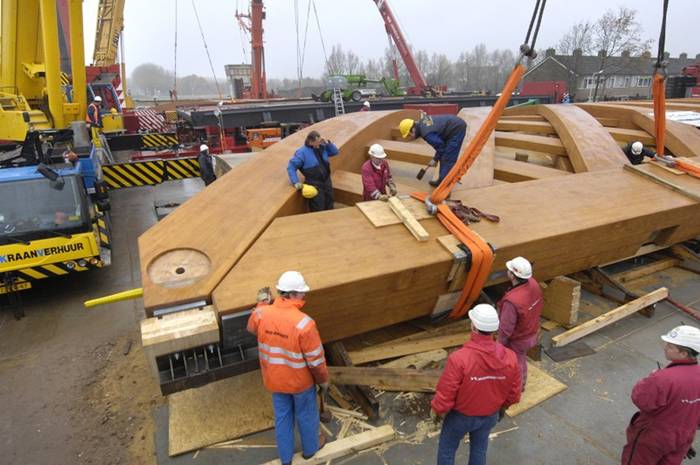Commissioned by the Province of Friesland, Oak (Onix and Achterbosch
Architecture) has developed a road bridge that connects 2 districts of
Sneek on either side of the A7 motorway. The bridge was designed for a
municipality that wished to establish a new city marker along the
motorway. Framework The Department of Public Works, the user of the
bridge, stated that it wished to use more wood in its constructions.
We regarded it as important to elaborate the wooden bridge in such a way
that it would be both recognizable and new to Sneek. The contours call
to mind the traditional cheese-cover farmhouses of Friesland; the
construction evokes reminiscences of the building expertise that it
still abundantly present in the old city; the wooden beams reflect the
shipbuilding industry, with Sneek as the water recreation city par
excellence in the North Netherlands. All these aspects led to the first
uncovered wooden bridge in the heaviest load class. This bridge is not
only a novelty for the Netherlands but also for countries such as
Canada, Norway and Switzerland where the covered bridge is a well-known
feature. The bridge consists of Accoya wood, an acetylated type of wood
that has been produced in a factory in Arnhem for around one year now.
The acetylation of wood is a process that makes wood almost
imperishable. The design of the bridge is a fusion of infrastructure,
construction, art and architecture. As a component of the renewed A7
motorway, the wooden bridge was envisaged at two positions.
The second wooden bridge will be realized in 2010. The interface of the
A7 with the inner city is thus defined for the motorist, for whom, when
on the motorway, the bridge is a city marker. For passers-by crossing
over the motorway, it is a gateway between the inner city and the
suburbs. Besides motorized traffic, pedestrians and cyclists also make
use of the bridge. The two wooden trusses have been coupled together at
the centre to ensure stability. The arched form arose by optimizing the
cross-section of the bridge for traffic. In conjunction with the
triangular structure of the framework, this offers surprising visual
perspectives. The bridgehead on the suburb side is a green dike element,
whereas on the inner-city side it is a concrete span that bridges a
waterway. The bridge was created as the result of an intensive and
integrated design process. In consultation with the client, we were able
to compile a team of professions and critics who made it possible to
realize the bridge. The bridge was built by a contractor from the town
of Schwäbisch Hall in southern Germany, where the tradition of producing
half-timber houses, and also bridges, is well known. The bridge is the
first wooden constructed bridge in a high traffic class. The first of
it’s kind in the whole world. OAK Architects: Haiko Meijer, Alex van de
Beld, Hans Achterbosch. More Images.
....Via — Link
















